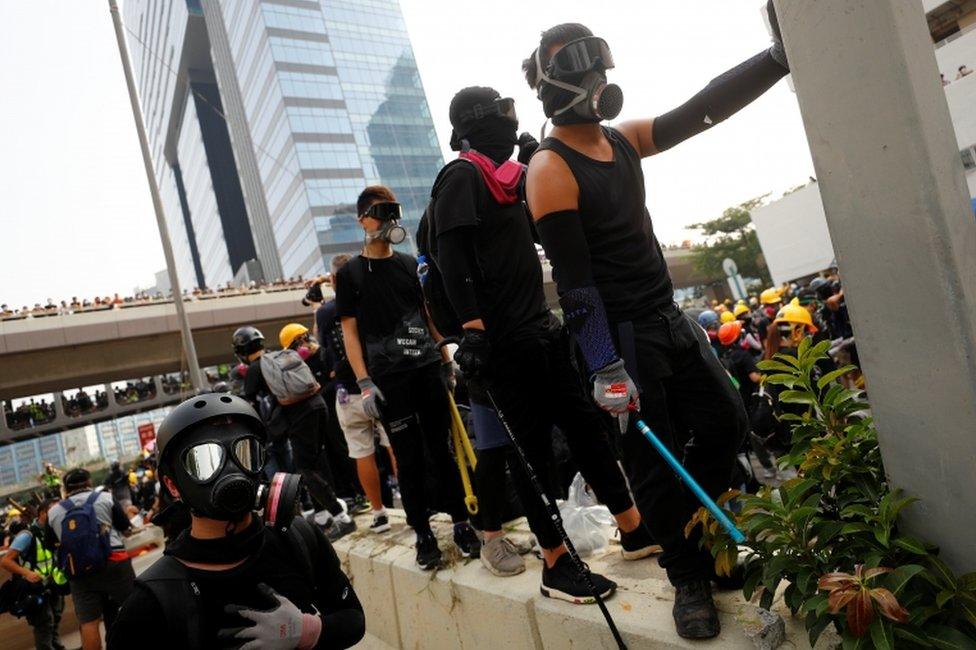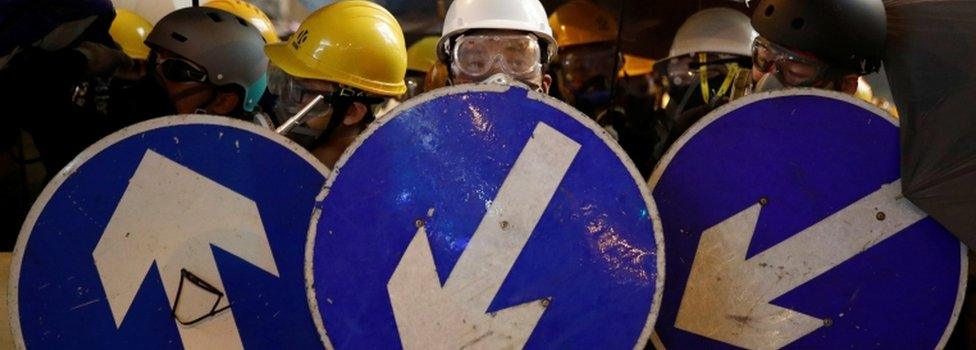China releases British consulate worker detained at border
- Published

A worker at the UK consulate in Hong Kong has been released by mainland China after being held at the border, Chinese police in Shenzhen have said.
Simon Cheng went missing on 8 August during a business trip to the city but has now returned to Hong Kong.
China's foreign ministry said Mr Cheng had been detained for 15 days for violating public security laws. The UK has welcomed his release.
It comes as anti-government protests in Hong Kong enter their third month.
The large-scale demonstrations were sparked by a now-suspended extradition bill that would have allowed Hong Kong to send criminal suspects to China for trial.
The police said Mr Cheng had been released as scheduled and that his legal rights had been observed, according to a post on the Weibo social media platform.
In a Facebook post, the Cheng family said: "Simon has returned to Hong Kong; thank you everyone for your support."
It asked for Mr Cheng to be allowed time to recover before any interviews would be allowed.
The UK's Foreign Office said: "We welcome the release of Simon Cheng and are delighted that he can be reunited with his family. We will continue to provide support to them."
Who is Simon Cheng?
Mr Cheng, 28, is a trade and investment officer, external at the Scottish Development International section of the consulate, reports local outlet HKFP.
The report says Mr Cheng studied in Taiwan and the UK before returning to Hong Kong.
Mr Cheng travelled to a business event in Shenzhen on 8 August via the Lo Wu crossing.
His girlfriend said he planned to travel home by train the same day but did not return. In messages to his girlfriend, he wrote that he was passing through the border, adding "pray for me".
What's the latest on the protests?
They have entered their 12th straight weekend.
A police-approved march has been taking place on Saturday in the industrial Kwun Tong area, attracting more than 1,000 people.

There have been more tense moments during the latest protests on Saturday
Bricks were thrown at one police station and officers fired tear gas in response.
Protesters also reportedly pulled down a "smart lamppost", devices that monitor traffic and air quality but which some believe also violate privacy.
Hundreds of pro-government supporters have picketed the Kowloon Tong HQ of public broadcaster RTHK, alleging it is biased, the South China Morning Post reported, external.
What is the situation in Hong Kong?
The protests were sparked by a now-suspended extradition bill that would have allowed Hong Kong to send criminal suspects to China for trial.
How Hong Kong got trapped in a cycle of violence
They have grown into a broader movement calling for democratic reform in Hong Kong, and an investigation into alleged police brutality against protesters.
Last Sunday, about 1.7 million people attended a pro-democracy rally in central Hong Kong, according to organisers. However police put the figure much lower at 128,000, counting only those at an officially sanctioned rally in the city's Victoria Park.
There have been previous protests at Hong Kong International Airport as well as tourist spots in the city.
On Friday, YouTube announced it had shut down over 200 channels that it said were part of a "coordinated" attempt to post material about the ongoing protests in Hong Kong.
Facebook and Twitter announced on Monday that they had taken steps to block what they described as a state-backed Chinese misinformation campaign on social networks.
Twitter said it removed 936 accounts it said were being used to "sow political discord in Hong Kong".

A guide to the Hong Kong protests

Summary of the protests in 300 words
All the context you need on the protests
The background to the protests in video
More on Hong Kong's history
Profile of Hong Kong leader Carrie Lam

- Published20 August 2019

- Published22 August 2019